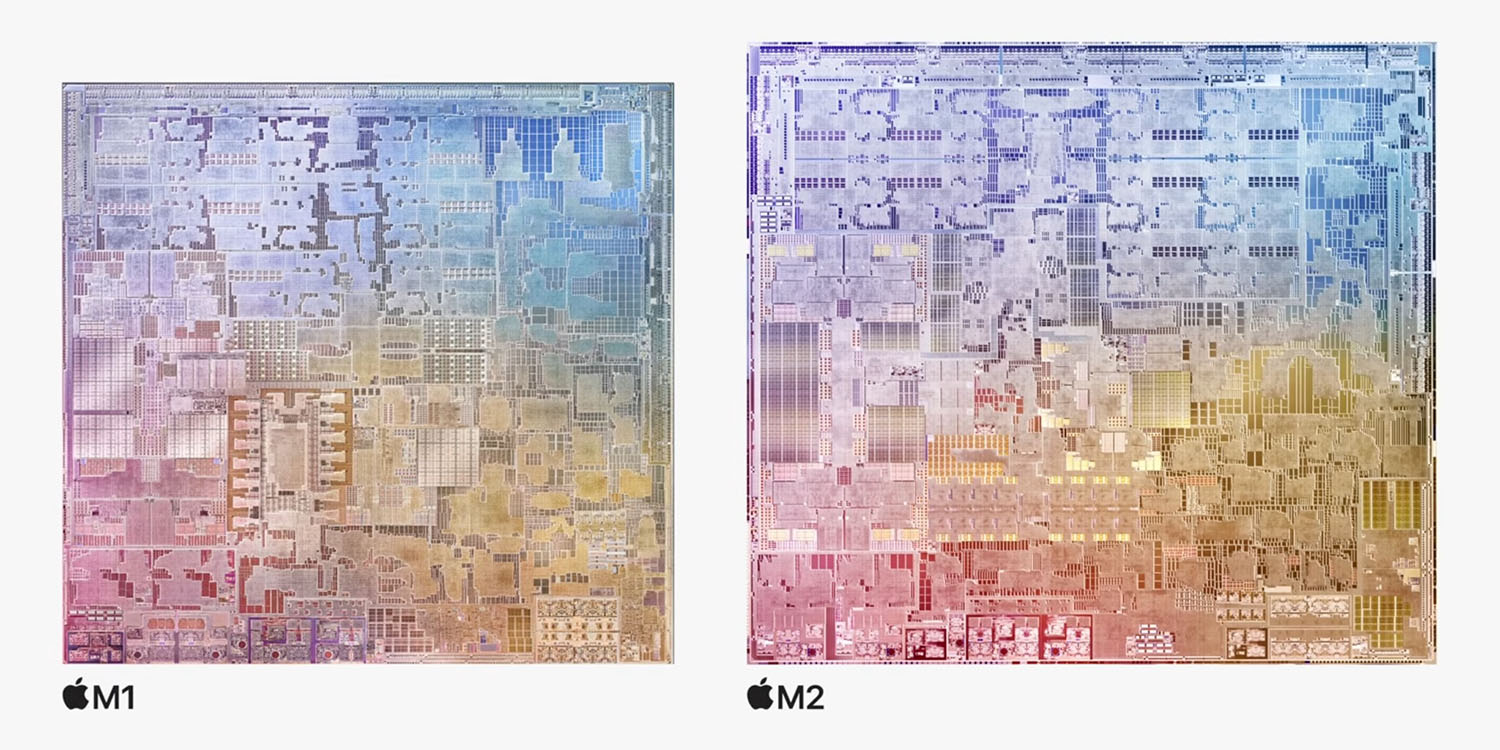
AnandTech has taken a deep dive into the new M2 chip announced yesterday, focusing in particular on the M1 versus M2 chip performance. These chips are available in the all-new MacBook Air, and in an updated version of the entry-level 13-inch MacBook Pro.
The site says that while Apple has been as coy as ever when it comes to specifics on the chip (for example, the clock speed), we do know quite a few things already …
M1 versus M2 chip: Similar to A14 versus A15
AnandTech’s Ryan Smith says that, overall, the upgrade looks similar to that of the A14 to A15 chip.
From a high level, there has been a limited number of changes with the M2 – or at least as much as Apple wants to disclose at this time – with the focus being on a few critical areas, versus the bonanza that was the initial M1 SoC. While all of this is preliminary ahead of either further disclosures from Apple or getting hands-on time with the hardware itself, the M2 looks a lot like a derivate of the A15 SoC, similar to how the M1 was derived from A14. As a result, at first glance the M1 to M2 upgrade looks quite similar to the A14 to A15 upgrade.
Apple said that the M2 chip is based on “a second-generation 5nm process,” which almost certainly means TSMC’s 5NP process. This boosts performance without increasing transistor density, and this is backed by the keynote illustration showing the M2 chip to be physically bigger than the M1 (above image).
M1 versus M2 by the numbers
Smith helpfully gathered together all the data Apple shared into a single comparison table.

Efficiency cores are more powerful
AnandTech suggests that a key difference between M1 and M2 chips is that the latter has more powerful efficiency cores.
The M2 retains Apple’s 4 performance plus 4 efficiency core configuration. Apple is not disclosing what generation CPU cores they’re using here, but based on the performance expectations and timing, there’s every reason to believe that these are the Avalanche and Blizzard cores that were first introduced on the A15 […]
Avalanche offers only modest performance gains, as Apple invested most of their improvements into improving overall energy efficiency […]
Based on what we’ve already seen with the A15, this bigger update in this generation is on the efficiency core side of matters. The Blizzard CPU cores are increasingly behaving like not-so-little cores, offering relatively high performance and a much wider backend design than what we see with other Arm efficiency cores.
35% faster GPU, but at a power cost
Overall, the M2 GPU appears to be more power efficient – but if you want to use the full power, then it’ll use more power than the M1.
Apple is touting two performance figures for the M2’s GPU. At iso-power (~12W), the M2 should deliver 25% faster GPU performance than the M1. However the M2’s GPU can, for better or worse, also draw more power than the M1’s GPU. At its full power state of 15 Watts, according to Apple is can deliver 35% more performance.
Importantly, the base M2 chip gets support for Apple’s ProRes and ProRes RAW codecs, which is only available on the Pro, Max, and Ultra versions of the M1.
50% more memory bandwidth
Another thing the base M2 borrows from the more powerful versions of the M1 chip is support for LPDDR5 memory, versus LPDDR4 for the base M1. This gives the chip around 50% more memory bandwidth, which will definitely help with GPU performance.
No I/O improvements
Smith says that the specs provided by Apple for the USB and other I/O protocols appear unchanged from the M1. Apple said nothing about the PCIe capabilities of the M2, so this too is likely unchanged.
As always with AnandTech pieces, it’s well worth reading in full.
FTC: We use income earning auto affiliate links. More.






Comments